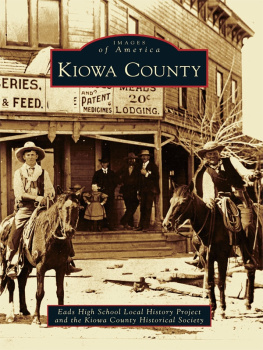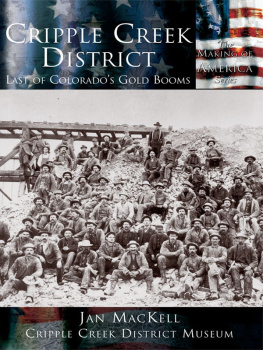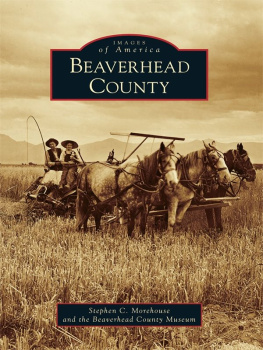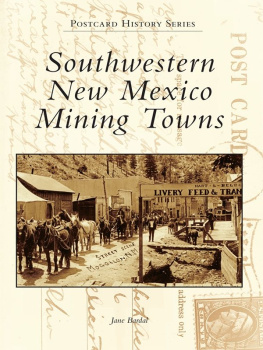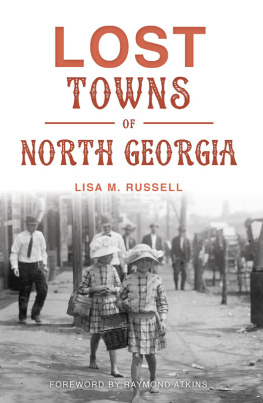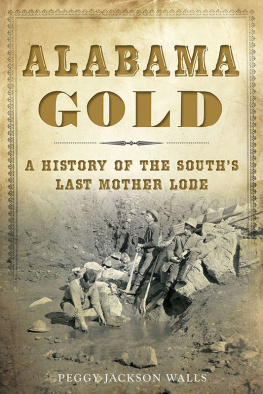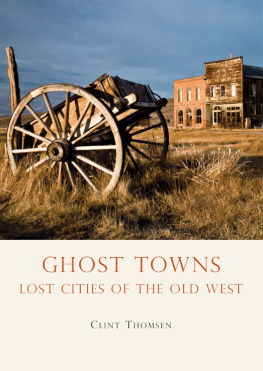

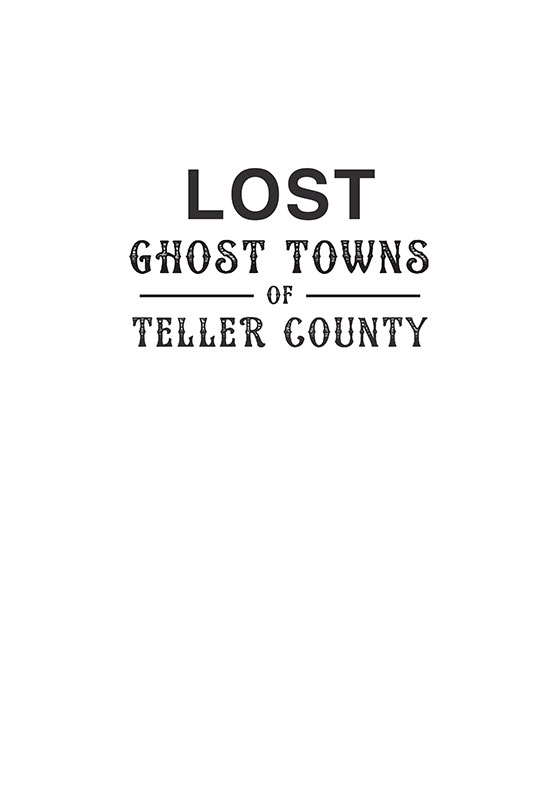
Published by The History Press
Charleston, SC
www.historypress.net
Copyright 2016 by Jan MacKell Collins
All rights reserved
First published 2016
e-book edition 2016
ISBN 978.1.62585.783.5
Library of Congress Control Number: 2016930762
print edition ISBN 978.1.46713.512.2
Notice: The information in this book is true and complete to the best of our knowledge. It is offered without guarantee on the part of the author or The History Press. The author and The History Press disclaim all liability in connection with the use of this book.
All rights reserved. No part of this book may be reproduced or transmitted in any form whatsoever without prior written permission from the publisher except in the case of brief quotations embodied in critical articles and reviews.
CONTENTS
PREFACE
I cannot remember the first time I ever saw a ghost town. My parents, who had rambled around the back country of the Southwest for much of their own childhoods, continued the habit as adults. On a weekend, vacation or sometimes even the evenings after my dad got off work, our family could be found exploring just about anywhere. From the hot and dusty deserts of Southern California to the lush mountains of Colorado and places in between, we scouted out faded trails to see where they led.
The family hobby suited us. My mom would read to us on the road about where we were going and what we might see. She always had a history book of some sort on hand. Our explorations led us to some stunning places during the 1960s and 70s. It was the perfect time to visit long-abandoned towns, ranches and whistle-stops before they sank back into the earth and ceased to exist at all. In Colorado, the names of these places now run together like a list of old friends. I never have outgrown the temptation to climb to the tops of old decrepit mills, step into abandoned houses, dig around in ancient dumps and photograph lone tombstones standing in a field.
Teller County in particular has always been one of my favorite places. I hold very fond memories of getting caught in a wicked rainstorm at Elkton, taking refuge in a house where furniture, including an old piano, remained as a testament to the newly wedded couple who once lived there. Wrapping paper from their gifts lay about, as well as a note explaining how the groom was in a terrible car accident days after the ceremony. I dont know if he lived.

The author in front of Goldfield City Hall, Cripple Creek District, 1985. The structure still stands and is well preserved. Jan MacKell Collins.
The day I finally found Manchester, my worries about locating the actual town dissolved when I spotted the sunken ground where two of the only buildings once stood. I was elated the day I was given directions to the old cemetery at Gillett. Most recently, my insatiable yearning to find Alnwick was satisfied, even though nothing is left of the village but an empty pasture. Finding nothing where there once was something is common when ghost-towning, but the satisfaction of at least finding the place remains the same.
The title of this book is no mistake. Populated places, such as Woodland Park, Divide, Florissant, Cripple Creek and Victor, do not appear in this book because they are still inhabited. Likewise, towns like Crystola and Goldfield that no longer have their own municipalities are excluded because they still have residents and remain known by their original names. Rather, included here are the settled places that are truly lost, some forever, as the landscape on which they perched has been literally changed by one circumstance or another.
Teller Countys history is truly amazing. So much was going on at various times that the population was truly of a transient nature, with inhabitants lasting anywhere from a few weeks to decades before dying or moving on. Our pioneers exhibited great courage in their struggles to survive in some pretty remote places. Some of the most interesting history in America transpired here, often carried out in rustic and primitive buildings that no longer stand.
I am thankful that I was able to visit certain towns and other places that are now gone and even happier that I get to share their stories now. In writing this book, I was pleasantly surprised to uncoveror, at least, solve the mystery ofcamps and towns I have never written about before. One thing is for sure: The ghostly western world of yesteryear is slowly fading to dust. Todays rides down history trails often yield piles of only what was, not what might have been. Sometimes, there is only a bare patch of ground left. Other times, a cemetery or a few buildings might mark the spot. If were lucky, the place has been carefully preserved, watched over and even fenced to prevent access. But the numbers of those few survivors are small compared to what has been lost to time, weather, progress and vandalism.
Because Teller Countys ghost towns are such a precious and endangered resource, readers will note the absence of clear directions to most of these places. Visiting a ghost town, even when there is little or nothing left, is a privilege future generations may not have. Please show the ultimate respect when seeking these wonderful landmarks of history.
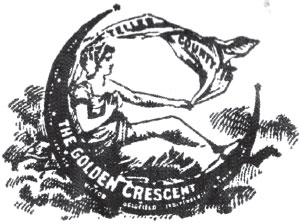
ACKNOWLEDGEMENTS
Because I have been writing about the people, places and events around Teller County for a number of years, my list of thank-yous seems simply enormous. Some of the people who have encouraged, helped, supported and advised me are no longer living. Many others remain as excellent colleagues, fellow history buffs and friends who, like me, continue to love this special place with all their hearts. One of them is my friend and mentor Richard Wayne Johnson, founder of the Cripple Creek District Museum in 1953 and still president of the board of directors when he died at the age of eighty-three. Cripple Creek is like a disease, he once said of the famed gold district that is the heart of Teller County. Once it gets into your system, you will never get it out again.
While Dick Johnson remains at the top of the list of people to whom I owe my gratitude, there are many, many others. They include but are not limited to Missie Trenary and Dick Tremayne, current stewards of the Cripple Creek District Museum; Linda Bretag and the staff at the Teller County Courthouse in Cripple Creek; Yvette at the El Paso County Clerk and Recorder; Shaun Boyd of the Douglas County History Research Center in Castle Rock; and everyone else who has answered my inquiries. Special thanks go to my editors, Artie Crisp and Julia Turner, who are having to learn to put up with me.
I am also so thankful for the many historians who gladly conducted early research on the towns of Teller County and shared invaluable information about them. My hat is off to Robert L. Brown, Perry Eberhart, Marshall Sprague, Leland Feitz, Mel McFarland, Dr. Thomas J. Noel and so many others who have written about the ghost towns of Teller County.
Next page



